This Week at READ USA
Books, Books…and More Books!
- Read USA Inc.
- December 29 2022
Book choice and ownership, and getting books into the homes of all local elementary students, particularly students in under-resourced communities, is one of the founding principles behind READ USA. We are so grateful for multiple partners who have recently stepped up to help us continue to fulfill that mission!
Thank you to these tremendous individuals and organizations who have collected and distributed thousands of free books during the past couple weeks:
LJD Jewish Family & Community Services (JFCS) Book Donation
READ USA had the honor and privilege to donate more than 600 books to the JFCS organization, which distributed the books as Christmas and holiday gifts to local children in need. Because of our generous donors, these children received brand new books to enjoy during their holiday break from school!
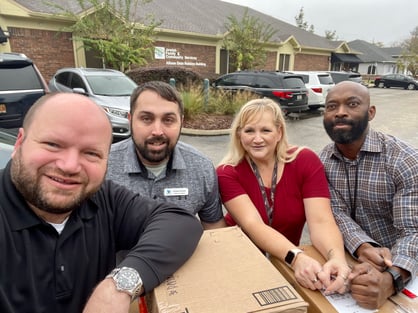
Jeremy’s Journey at Parkwood Heights Elementary School
Last week, local education advocate Winston Seabrooks (who gave a TEDxJacksonville talk in 2020 about “Bringing Hope and Pride Back to Your Inner City School”) organized an event at Parkwood Heights Elementary School where READ USA distributed Jeremy’s Journey books to an entire fourth-grade class. Sponsored by First Horizon Bank, each child received an edition of Jeremy’s Journey when Jeremy met with Dr. Rudy Jamison, Jr., a passionate community advocate who is a professor at UNF and READ USA Board Secretary. READ USA is so grateful to be invited to attend and put more books in children’s hands, particularly a book about a local leader! Thank you, Winston and First Horizon Bank!
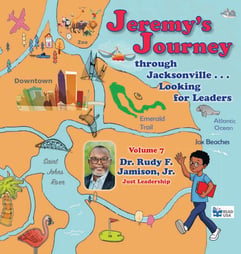
.png?width=265&height=256&name=Parkwood%20Heights%20with%20Winston%20Seabrooks%2012.20.22%20(1).png)
Future Leaders Academy & Preschool
READ USA had the pleasure to work alongside Winston Seabrooks at not just one, but TWO events recently! He coordinated an event at Future Leaders Academy & Preschool that also included the Jacksonville Sheriff’s Office and Jacksonville Fire and Rescue Department, who distributed 2-3 toys to each child and gave tours of the firetrucks and police units. READ USA gave a free book to each child as well, and our Director of Tutoring Tabetha Cox conducted a read aloud of “10 Apples Up on Top” by Dr. Seuss to model book conversations and dialogic reading for the teachers and students. They also discussed the importance of concepts about print and phonological awareness in preschool.
Tabetha shared, “When talking with Natalie, lead teacher at Future Leaders Academy, she talked about this daycare being a safe space for elementary-aged kids who are waiting for transportation or missed their bus so that they don’t walk around unsupervised on the downtown streets. She invites them in to work on homework and help around the classroom, and they rise to the challenge of managing children much younger than them.”
We are so grateful to Winston, JSO, JFRD, and our READ USA team members for making this a memorable event for these young minds!
.jpg?width=228&height=171&name=Future%20Leaders%20Academy%20and%20Preschool%2012.20%20(1).jpg)
.jpg?width=251&height=173&name=Future%20Leaders%20Academy%20and%20Preschool%2012.20%20(2-1).jpg)
.jpg?width=230&height=172&name=Future%20Leaders%20Academy%20and%20Preschool%2012.20%20(4).jpg)
.png?width=181&height=242&name=Future%20Leaders%20Academy%20and%20Preschool%2012.20%20(5).png)
.jpg?width=182&height=243&name=Future%20Leaders%20Academy%20and%20Preschool%2012.20%20(3).jpg)
2,000+ Books Donated by Barry Schuster
Barry Schuster, a local philanthropist and founder of the End Food Deserts Now Program, an organization that works with school districts to improve their cafeteria dining programs, recently donated more than 2,000 gently used books to READ USA! He heard about our mission and work through a friend and decided to make the generous donation, and we could not be more thankful! These books will go a long way in supporting READ USA’s community book giveaways as well as tutoring after-care. Thank you very much for your generosity, Barry!
READ USA and our Teen Tutors in the Florida Times-Union
Thank you to the Florida Times-Union and reporter Beth Reese Cravey for sharing this wonderful story about READ USA’s Literacy Tutoring program that featured two of our incredible teen tutors! As always, we are blown away by our teen tutors and their commitment to helping build a better future for our local elementary students!
Liano said it best himself: “I believe in what I do,” Liano, 16, said. “Teaching kids a skill that will stretch their minds in any direction they could want to go. What I once never thought about is a passion of mine.”
Children’s Book: A Ticket Around the World, by Natalia Diaz and Melissa Owens
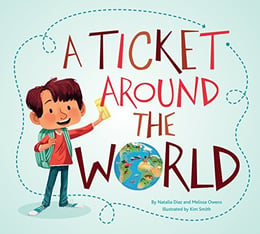
Illustrated by Kim Smith
This delightful picture book follows a captivating little boy on his journey to 13 different countries in the world. Using a double page spread layout, readers will learn about language, customs, foods, and famous points of interest for each country. Readers can peek into countries like Costa Rica, Morocco, and India. Captivating and colorful illustrations demonstrate big ideas, and this book is sure to introduce little readers to text features like labels, bold words, pop outs, and diagrams and maps. Young readers and intermediate students can find interest in practicing close reading strategies, making connections, and asking questions.
Submitted by Tabetha Cox, Tutoring Program Director
Education Corner - The Five Pillars of Reading: Reading Comprehension (Continued)
“So please, oh PLEASE, we beg, we pray, Go throw your TV set away, And in its place you can install, A lovely bookshelf on the wall.”
-Roald Dahl, Charlie and the Chocolate Factory
This week we will be looking at part of the Comprehension component of reading and ways to help students grow in this area.
- Phonological awareness – awareness of the sound structure of words
- Phonics – correlating sounds with letters or groups of letters
- Fluency – accuracy, rate and expression while reading
- Vocabulary – the body of words a child has learned
- Reading comprehension – the understanding and interpretation of what is read
Comprehension can be compared to an intricately woven tapestry. Skills and strategies required for comprehension are connected to each other, creating a masterpiece of thinking about text. We will spend several weeks looking at comprehension due to the depth and breadth of this strategy.
Our focus on comprehension this week will look at strategic actions when “Thinking Beyond” a text. Depending on the purpose for reading, a skilled reader will reflect on the text they have read to integrate the new learning with knowledge in their schema. Inferring, or being able to realize what is happening without being explicitly told, is a challenging skill for students to internalize. Synthesizing is the ability to blend old learning with new knowledge. Making connections is foundational to deep comprehension. Predicting is when a reader can not only use events in the text to think about what will happen next, but have the knowledge and skill to monitor their understanding by going back into the text to see if their predictions were correct.
Inferring is one of the most challenging reading behaviors for children to internalize and experience consistently. They are told to “read between the lines” and they stare, blank-faced, saying, “There isn’t anything between the lines!” Readers use their prior knowledge and text clues to draw conclusions and form unique interpretations of a text. Students are taught that inferencing is a result of combining what is in the text with your schema or knowledge you bring to the reading but often are unable to come to conclusions about the author’s intent.
Synthesizing Synthesizing a text is the process of pulling together background knowledge, new ideas, connections, inferences, and summaries into an original and complete understanding of the text. When students synthesize, they are made aware of how their thinking changes as they read a text.
Making connections Every experience the reader brings to the reading task impacts their comprehension. Life experiences, trips, family events, social media, and books read, all build a foundation for a child to make connections to what they read. The more connections a reader can make to what they read, the deeper their comprehension. Students are encouraged to make text to world, text to self, and text to text connections as they read.
Predicting Students are encouraged to use their background knowledge and what is happening in the text to think about what is going to happen next. When a reader is fully engaged with a text, they are consistently thinking about what will unfold in the text and reflecting on the events to see if their predictions were correct. Readers know a story has characters, a setting, a sequence of events, and a problem and solution. Knowing these elements helps them predict the sequence of events. When reading informational text, the reader uses what they know about a topic, or similar topics, to predict new information they might learn.
How to help readers to infer, synthesize, make connections and predict:
Read the book, Tough Boris, by Mem Fox. It is a great book for not only inferring what we know about pirates and using clues from the text but changing our thinking over time. Before reading, ask your reader to predict what the book will be about, stop after a few pages and ask them what they are thinking, when finished, ask them to talk about how their thinking has changed and what they learned and why. Have them make connections to the book and explain where the connections came from.
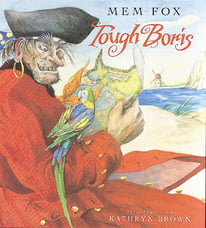
- Infer Give your reader simple examples of how we infer in everyday life to understand the concept. For example, when we walk into the kitchen and there is a dirty bowl with a few frosted flakes floating in a bit of milk, we think to ourselves, someone has had a bowl of cereal. No one tells us this, we didn’t read it anywhere we just have used clues to determine this. This is an inference. In a text, encourage your reader to put two and two together. Ask them what they learned or know that is not written in the words, but they “figured out” using clues and their own thinking. Conversation with your reader is the best way to lead them to inferring. Asking them why things happen, will …happen, why do you think…, etc. These types of questions encourage thinking about a text to come to conclusions that are not written specifically in the text.
- Synthesize Readers can practice synthesizing by retelling and elaborating on each part they retell. During your family reading time stop periodically and model for them how to use language like, I’m thinking…, at first I thought…, this part is really different than I thought it would be because…, what I think now is…. Engage them in conversation before, during, and after reading a text.
- Connections Conversation with friends and family builds a foundation of connections that can be made while reading to support comprehension. Reading books together that kids can relate to will encourage connections. Ask them what the book reminds them of but keep the connections relevant to understanding the text. Connections should deepen comprehension. Did they read that in another book? (text-to-text connection) Was it something they saw on television or in the news? (text-to-world connection). Have they experienced something like this? (text-to-self connection) Encourage them to share any memory from their schema that will help them to understand the text.
- Predicting Readers need to be able to predict what they think a text will be about, what might happen next, and then be able to confirm or adjust their predictions based on their understanding. An engaging non-fiction text that is wonderful for predicting is the book, What Do You Do With a Tail Like This by Steve Jenkins. In this book, the author focuses on animal body parts that help them survive. As you read, have your reader predict, ask them to think about what they know about the animal (make connections) and what surprises them. (inferring)
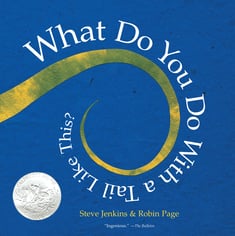
To learn more about reading strategies visit the website below: https://www.readingrockets.org/article/key-comprehension-strategies-teach
